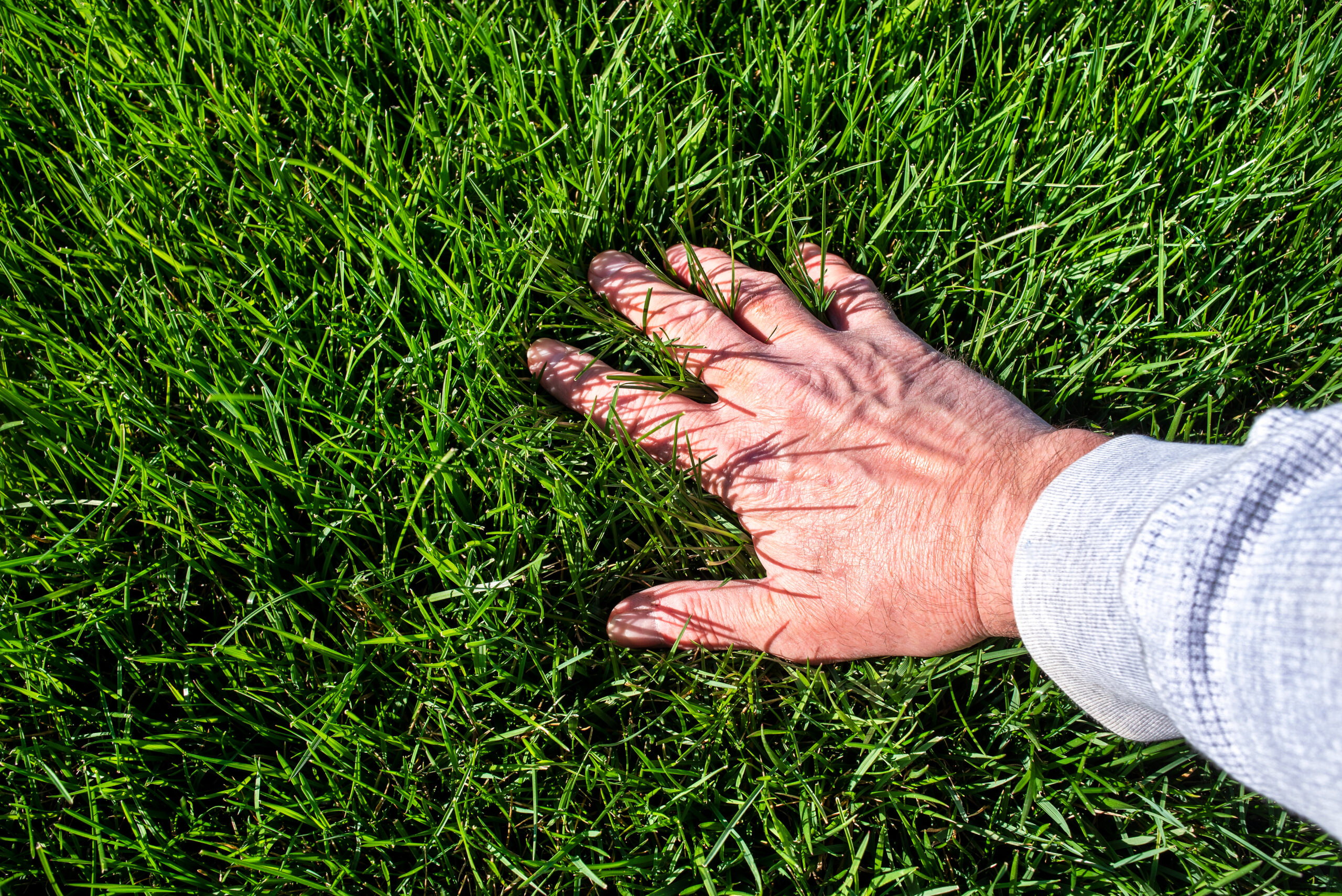You are currently looking at your beautiful, freshly installed sod and are admiring its lushness and vibrant color. Then, a thought pops into your head: how am I going to take care of my sod?
Newly laid sod requires special care before it establishes itself and grows roots. However, because sod already has its own rooting system, the initial care only needs to last for about 2 to 3 weeks. After that, your sod has established its roots and can grow normally, like any other lawn.
Sod maintenance for new sod involves special rules for watering, walking, fertilizing, and mowing. Let’s take a look at what you need to do to help your sod grow and turn it into a super sod that all your neighbors and friends will admire.
Watering Your New Sod
You will be amazed at the amount of water new sod requires. Because its tiny roots are exposed, you need to make sure they remain moist throughout the day until they merge with the soil underneath.
How Much Water Does My Sod Need?
You will need to water your sod 4 to 6 times a day. The total amount of water your new sod needs is around 1 inch of water per day for the first 2 weeks. Your sod should feel moist and damp but not spongy and overwatered.
You need to ensure the soil under your sod is damp. Check how well you have watered the soil by gently lifting an edge and pressing the soil underneath with a finger to check its moisture.
Getting it right is a bit of a fine balance. Light sprinklings will only moisten the top layer of the sod without entering the ground. However, if you water your sod too much, then you will be soaking it and depriving it of oxygen. This can lead to diseases developing on your beautiful sod, particularly if it’s warm during the day.
Sod Watering and Types Of Soil
Before choosing the right amount and frequency of watering, you need to take into consideration the type of soil you have laid your sod on.
Sandy soil lets water seep through relatively easily, so you might need to water more often and use more water.
Clay soil retains water, so you could probably eliminate one watering sequence.
How Often Should I Water My Sod?
You shouldn’t water your sod in one single session because the tiny roots are too small to absorb such large quantities of water. In general, for the first 2 weeks, you should water 4 to 6 times a day. After the second week, you can eliminate the last watering session.
Depending on the weather and how your sod is moving along, you should move on to deeper but less frequent watering sessions. This will help your lawn develop deeper roots that can find water deep in the soil, thus better sustaining the grass.
When Should I Water My Sod?
It is best to water early in the morning, so try to have two of the soakings very early in the morning. If you water in the middle of the day, most of the water will evaporate, particularly in the middle of summer. Also, the combination of water and heat is the perfect breeding ground for diseases.
Watering and the Seasons
Once your sod has established and has grown its feeding roots, you should adjust your watering frequency as the seasons change:
- In spring and fall, you could limit your watering to once or twice per week.
- In high summer, you will need to water your sod at least once per day for 15 to 20 minutes, depending on the soil quality and the temperature.
- In winter, your sod grows very little. It needs no mowing and will require very little watering as long as it rains at frequent intervals.
Walking on Your Sod
Just looking at your lawn makes you want to run and roll on it. However, we advise you to keep foot traffic off your new sod for the first 2 to 3 weeks after installation. If you walk on your sod before that, you risk displacing it and causing depressions and bumps. Also, if your sod is not in close contact with the soil, it will eventually die and telltale brown patches on your lush lawn will soon make their appearance.
After the second week, go to the edge of your sod and gently try to lift one corner: if you can’t lift it, it means that your sod has attached itself to the soil and is growing roots. While you may now softly walk on your lawn, we strongly advise our customers to start with gentle foot traffic on their newly-laid sod until at least one month after installation. This will help the blades establish themselves and the roots to grow properly.
When Should I Mow My New Lawn?
You will know that your lawn is growing roots and getting nutrients from the soil when you see the blades grow.
The first mowing should be after the second week of installation. Check the lawn’s roots by gently trying to lift a corner. If you can’t, then your sod has started establishing itself and you may mow it.
Before mowing, turn off the water for 24 hours, to let the soil dry: you don’t want the soil to be too soft because your lawnmower could cause depressions with its weight.
While you should be careful not to rush mowing, we suggest you don’t wait too long for the first mowing either: as the grass blades grow, they start making shade on the bottom of your lawn.
How Much Should I Mow My New Lawn?
You should take away one-third of the grass blade length. Cutting too much can cause a shock to your lawn while cutting too little will perpetuate the shading.
Should I Fertilize My New Sod?
If you have bought your new lawn from a specialized sod farm like Twinwood Farms, your sod should already have all the fertilizer it needs from when it was growing. So, you shouldn’t need to fertilize your sod for at least a month after installation.
Before adding any fertilizer, you must first let your sod grow roots so that it can absorb nutrients and minerals. Without a proper rooting system, the fertilizer could burn the small roots of your sod.
How Often Should I Fertilize My Sod?
Once your sod has established itself, you should fertilize it every 6 to 8 weeks during the growing season. Four fertilizing sessions per year should be enough for your lawn to look lush and healthy throughout the year.
When Will Sod Lines Disappear?
As your sod grows, the grass blades will grow and the sod lines will gradually vanish. Depending on the sod type you have chosen, the sod lines should disappear within 4 to 6 weeks.
Contact Twinwood Farms for Quality Sod
If you want quality sod that has been grown in the most efficient and professional way, then you must contact Twinwood Farms. We grow high-quality sod such as Raleigh St. Augustine or Tifway 419 Bermuda and can help choose the best sod for your location, weather conditions, and expected use.



